k.d. lang — Shadowland
I’m not sure when I would have heard of k.d. lang were it not for a Warner Records sampler CD series, the “Just Say Yes” series. The first one came out in November 1987, a low-cost CD with 14 tracks by a variety of acts I was interested in and had never done much to track down, like Depeche Mode, Echo & The Bunnymen, and The Mighty Lemon Drops. it also featured groups I’d never heard of like Aztec Camera and Erasure. For many, The little sample was enough, and “Just Say Yes” became one of our favorite and most-played CDs in those days. That was followed just months later, in August 1988, by a volume II titled “Just Say Yo.” It featured additional tracks by a number of acts from the first sampler, and a bunch of new stuff as well. It also quickly became one of our most commonly played CDs.
On it was an absolutely enchanting little torch song, “Black Coffee,” by a hitherto unheard-of Canadian singer named k.d. lang.
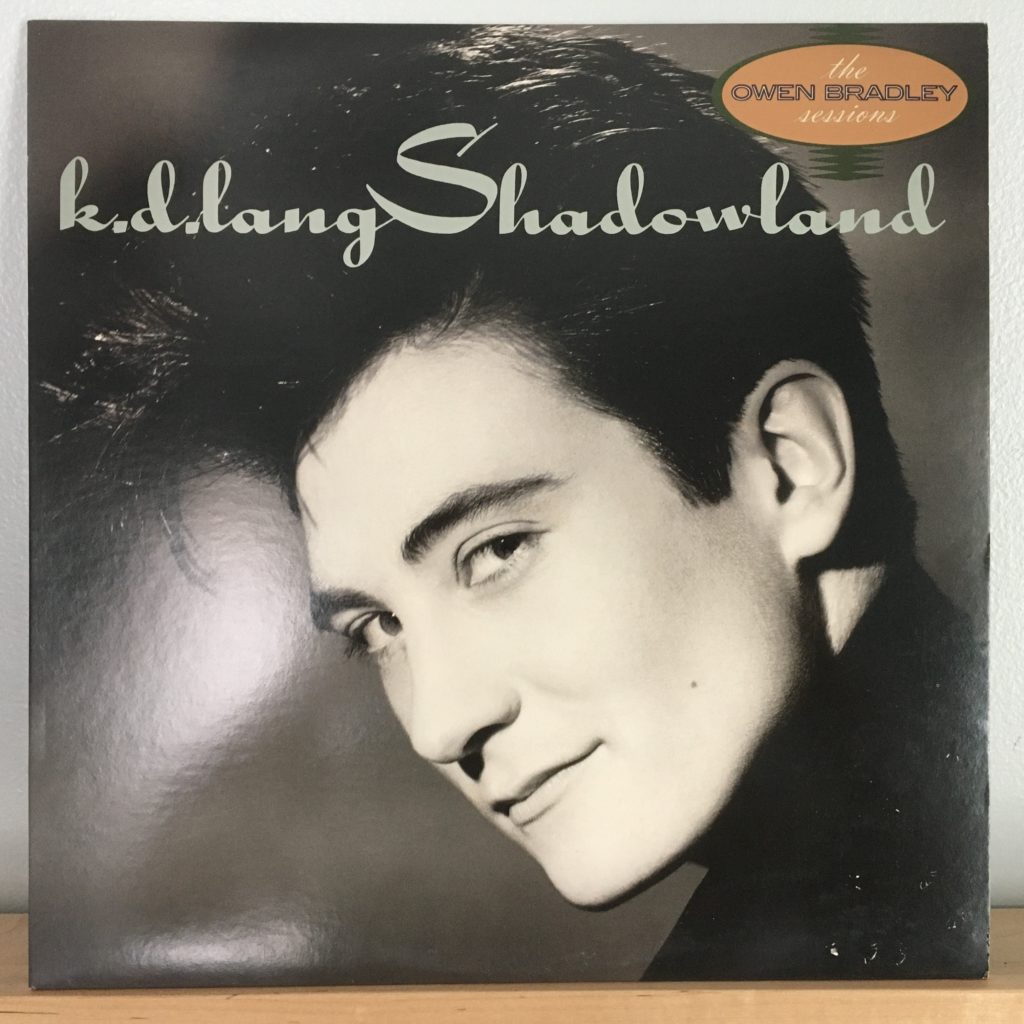
Let’s take a minute to talk about the importance of coffee to us.
I started using/abusing coffee seriously in high school. The use part was a morning cup from Stewart’s on the walk in to school, picked up along with my daily copy of The New York Times, because I was both pretentious and informed, and fully expected to be a newspaper journalist whose byline might someday grace those pages. I often needed the coffee because I hadn’t slept well, which was often caused by drinking coffee at night (among other causes). Many were the evenings our Explorer Post was hunkered down over some project in the basement of the county Boy Scout headquarters at 2 Union Street in Schenectady (now a private home), and many were the evenings when I thought putting a quarter into the coffee machine was a good idea (narrator: It was not.)
That, of course, carried over into college, where newspaper culture was coffee culture, and we put out hundreds of editions of The Daily Orange fueled by some awful coffee. In those years, in that time, awful coffee was the standard. There was hardly such a thing as good coffee: we all relied on pre-ground cans of Maxwell House or Folgers or some such nonsense, run through a percolator or, sometimes, one of those new-fangled drip coffee makers like Mr. Coffee. It was never good, not really, but it was necessary. There were no Starbucks or other coffee chains in those days; diners and coffee shops all served some form of swill or another. There were some rare places that served some really excellent coffee – in Syracuse, that was mostly the fine restaurants and better diners that offered Paul DeLima coffee, which was always flavorful and good. We’d go out for dinner at a lovely place like Pastabilities (before it was in Armory Square, kids), and would always brave a post-dinner coffee because it was just so good it was worth the sleeplessness. (Also: we were young and in love. If kept awake, we’d find things to do.)
But at home, at work: coffee was just miserable.
Then, around 1985, a coffee revolution started happening. Lombardo’s imports opened a very fancy coffee and espresso bar (along with gelato), which never seemed to have any customers but boy could they make a cup of coffee, and they were just a few blocks from our house. Smith Restaurant Supply started roasting their own coffee, under the Hyman Smith brand. Seriously. They bought a coffee roaster and had a delightful young roaster who was our first ambassador to the world of good quality coffee. This was absolutely groundbreaking. We got a little drip filter coffeemaker, hoping it would improve the taste . . . and it did, but there was still something missing. It just wasn’t perfect, no matter the quality of the coffee beans we put in it.
That summer of 1985, we spent a lot of time running back and forth between Albany and Syracuse, visiting family, visiting the Berkshires, just being out in the world together. We found ourselves on Lark Street that summer, certainly not for the first time, and discovered The Daily Grind. They had already been around for a few years by then. We wandered in to the upstairs retail shop and were greeted by that wonderful smell of roasting beans and an astounding selection of coffees. The owner started talking up various coffees and the advantages of beans and local roasting and all the other things he had to do back then to convince people there was a better (much better) way than canned grocery store coffee. I expressed that we knew about beans, we knew abut roasting, but that even then, we just weren’t getting a good cup of coffee.
He walked over to a shelf, and pulled down a box. “French press,” he said. “You need a French press.” And he sold us our very first Bodum French press (a very pricey sale at the time, I believe, around $25, but still less pricey than electric coffee makers). Omigod, was he right. Immediately, every pot of coffee we made was perfect. We have never gone back.
Of course, since then, American coffee culture has grown astronomically, but in those days, we were still among the few wandering into the Hyman Smith store every week to get our pounds of Ethiopian Harrar or Kenya AA. As non-drinkers, with coffee our only appreciable vice, we strongly identified with the very concept of coffee, and now we had a whole set of rituals to go with it.
And so, firmly embedded in the coffee culture, of course songs about coffee were bound to resonate. The cigarettes part, we can do without, but if you sing about coffee, it’s likely to get our attention. It worked for Squeeze, with “Black Coffee in Bed,” and it worked for k.d. lang with “Black Coffee.”
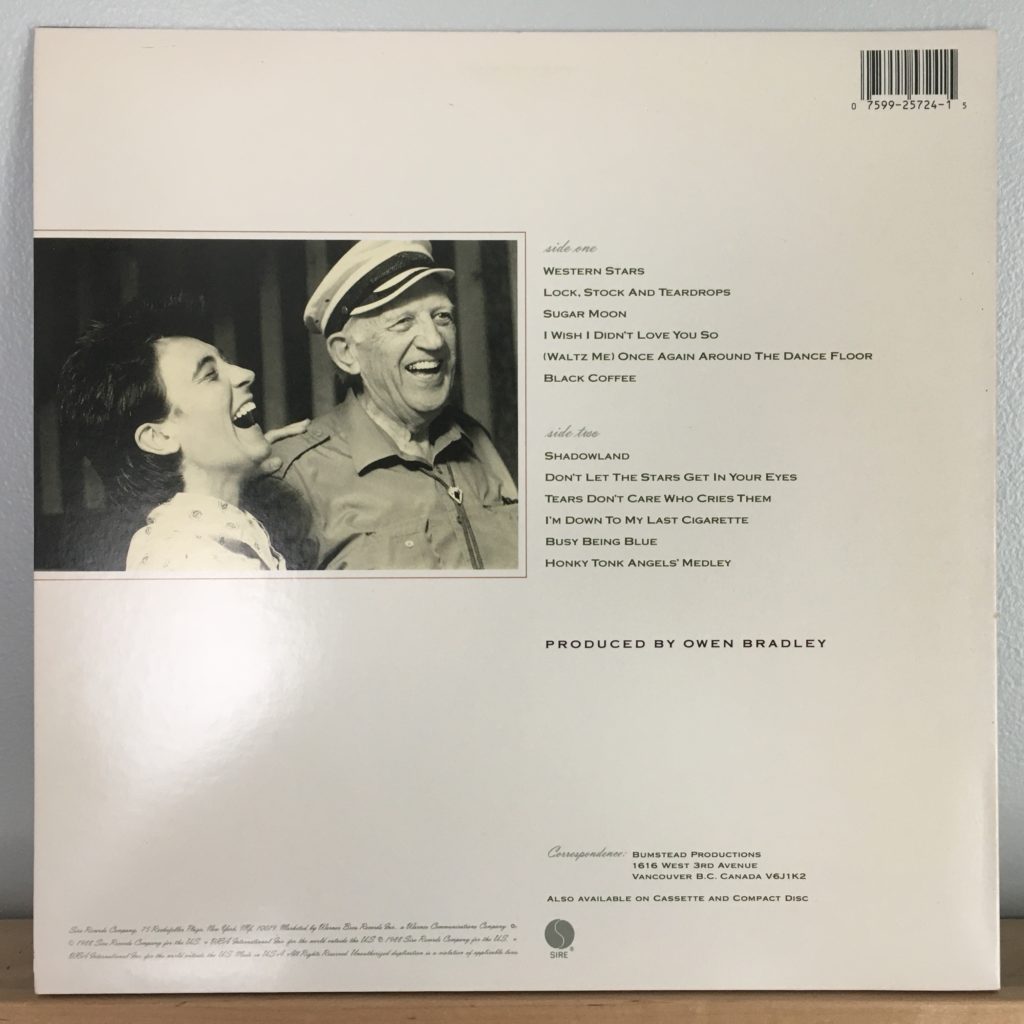
We just loved the song: it was so atmospheric, so gently torchy, so about coffee. So we were naturally induced to buy the album it came from, k.d. lang’s “Shadowland,” which had come out in April 1988. Though not her first album – she had put out two previous records with The Reclines that got minimal notice in the US — this was the one that really caught attention. It was produced by Patsy Cline’s producer Owen Bradley, which quite naturally occasioned a lot of comparisons and thoughts that here, perhaps, was a talent to approach Cline. It was not like anything else in our collection at the time – some of it pure country, but original, old-style country, quiet and self-assured. Even the inclusion of Brenda Lee, Loretta Lynn and Kitty Wells on one of the tracks just seemed natural, not stunty. A beautiful album that led the way for my soon-to-come appreciation of Cowboy Junkies doing a similar quiet country with their own songs (and some Patsy Cline).
This album got a lot of play, and we jumped on her next release, “Absolute Torch and Twang” with the Reclines again, when it came out in late spring 1989; that and the previous “Angel with a Lariat” were picked up in CD format. So was “Ingenue,” just a few years later, which proved to be the end of my k.d. lang interest.
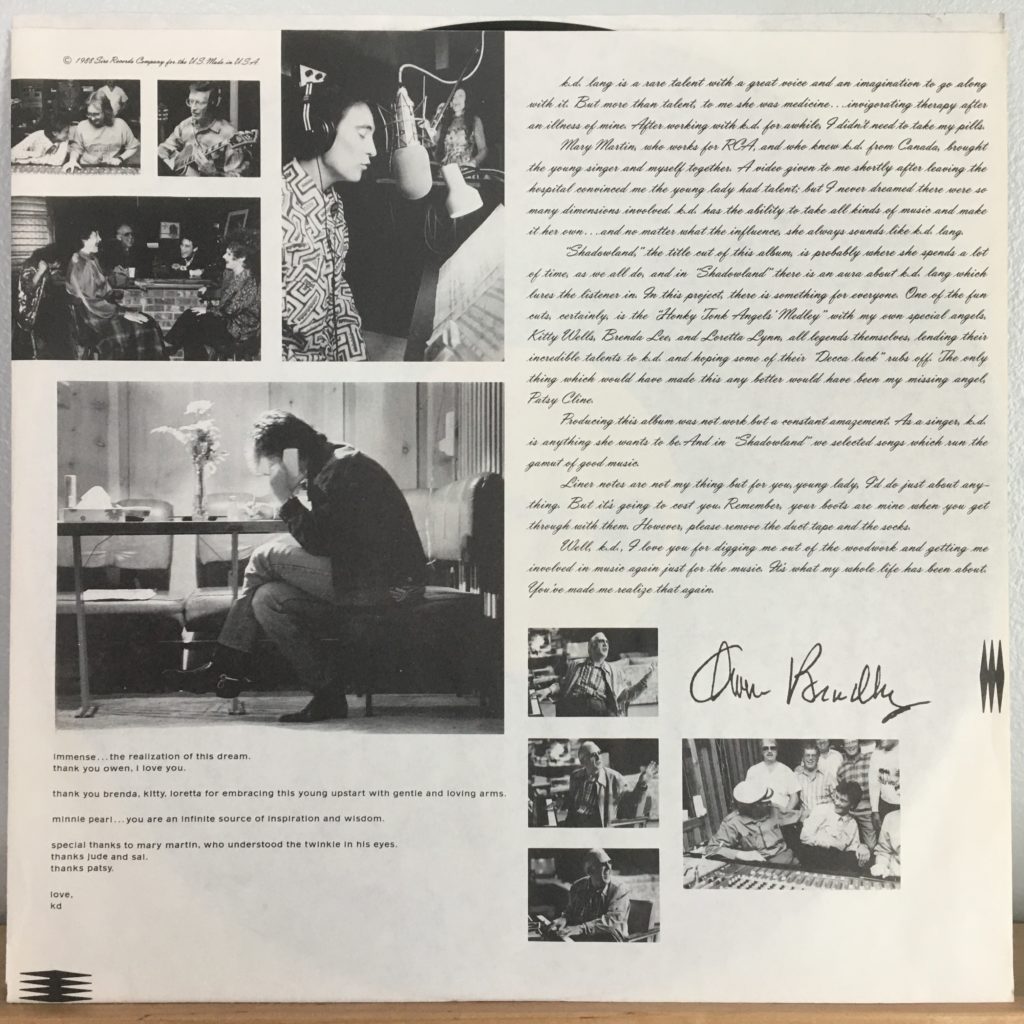
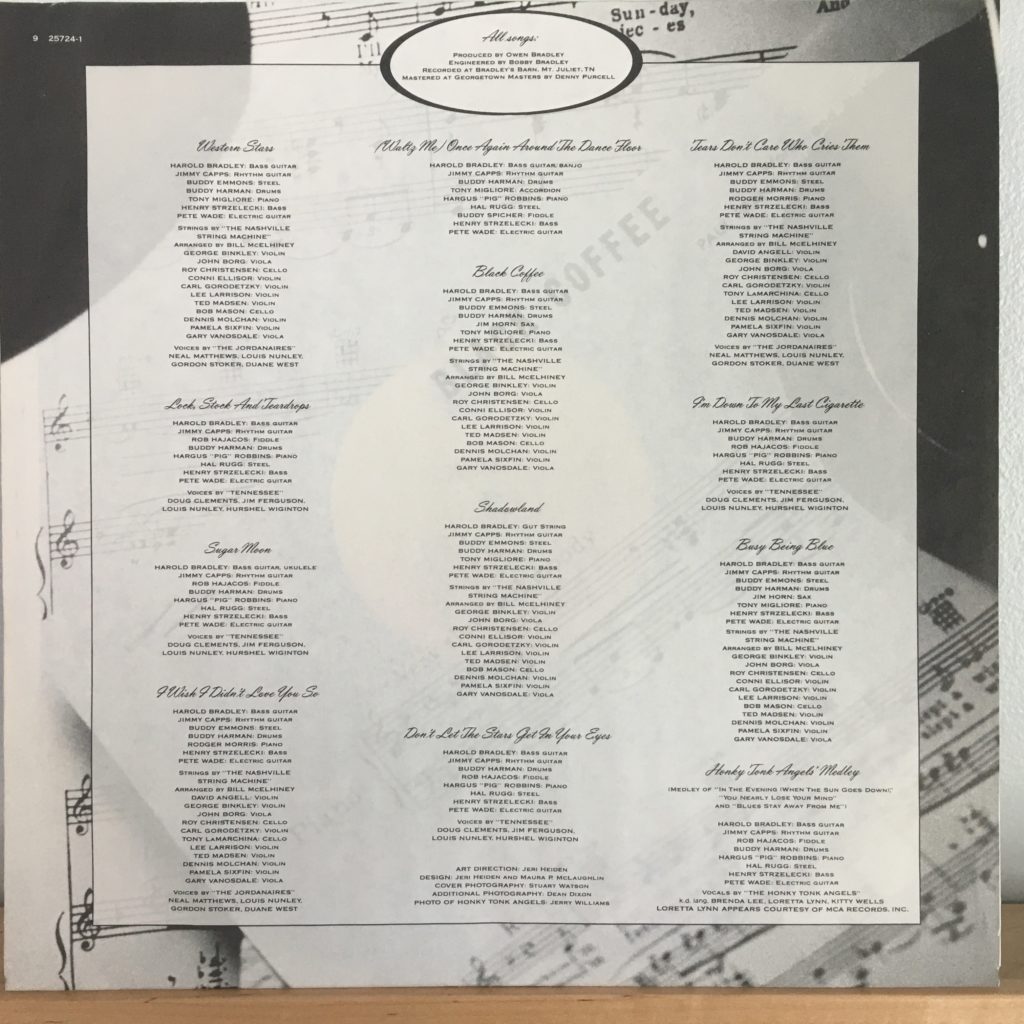
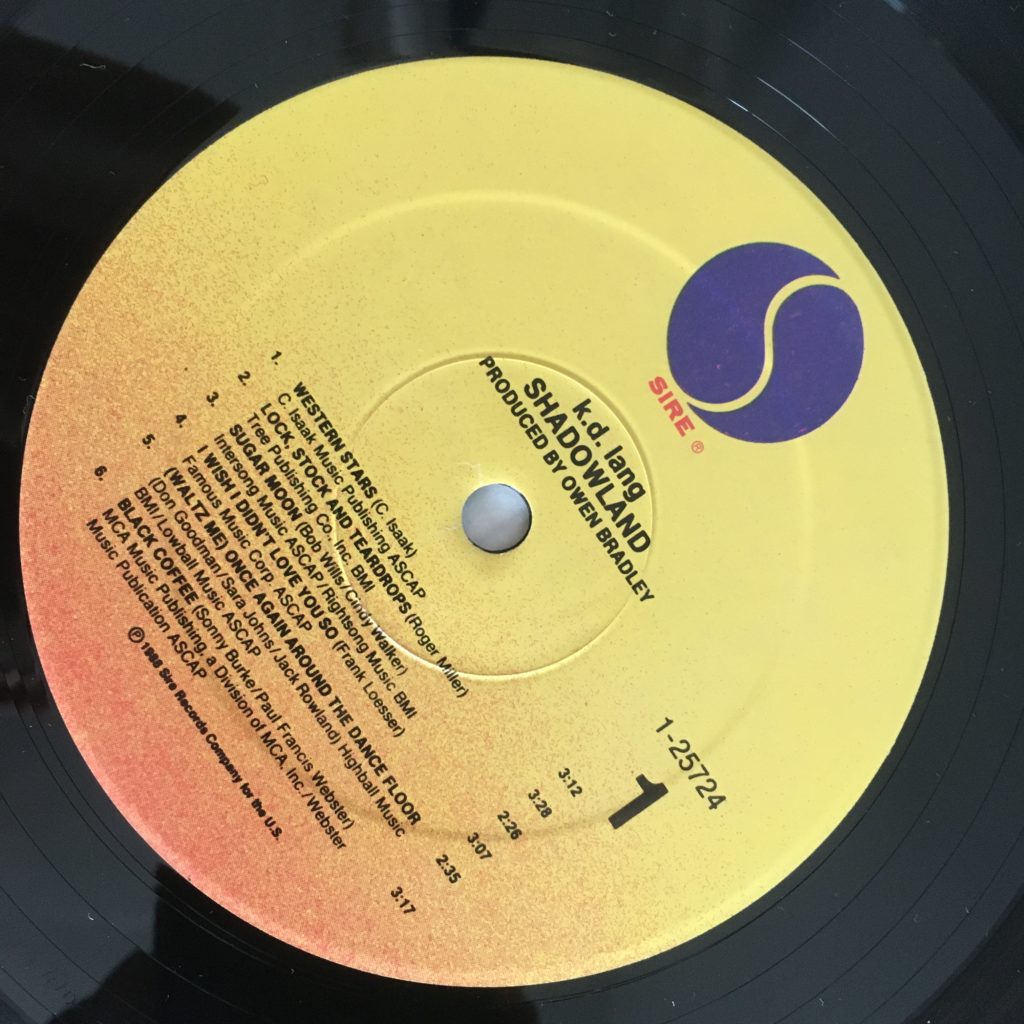
We did get to see k.d. lang live at some point around the “Absolute Torch and Twang” release, either ’88 or ’89, playing at Syracuse’s Landmark Theatre. The Landmark was Thomas Lamb’s baroque fever dream of the Orient, a movie palace that really outdid nearly every other for ornate design. The theater was packed, and while we were by no means the only straight couple there, we were certainly in the minority. Lang hadn’t come out yet, but it was pretty clear to a big segment of her audience who she was and what she represented, and I’m glad that she was able to come out just a few years later, after having to obfuscate for several years in order to avoid the predictable reaction.
Just because of the timing, coming as it did when I was already transitioning heavily to CDs (having discovered her from a CD), this is my only k.d. vinyl.
One last note: this album contributed two songs to one of my later cassette compilations, one that I made in May 1990, when I had moved to Albany, begun a career in government, and no longer had access to the typesetting equipment that made very nice cassette box inserts, so I had to resort to doing them by hand like some kind of commoner:
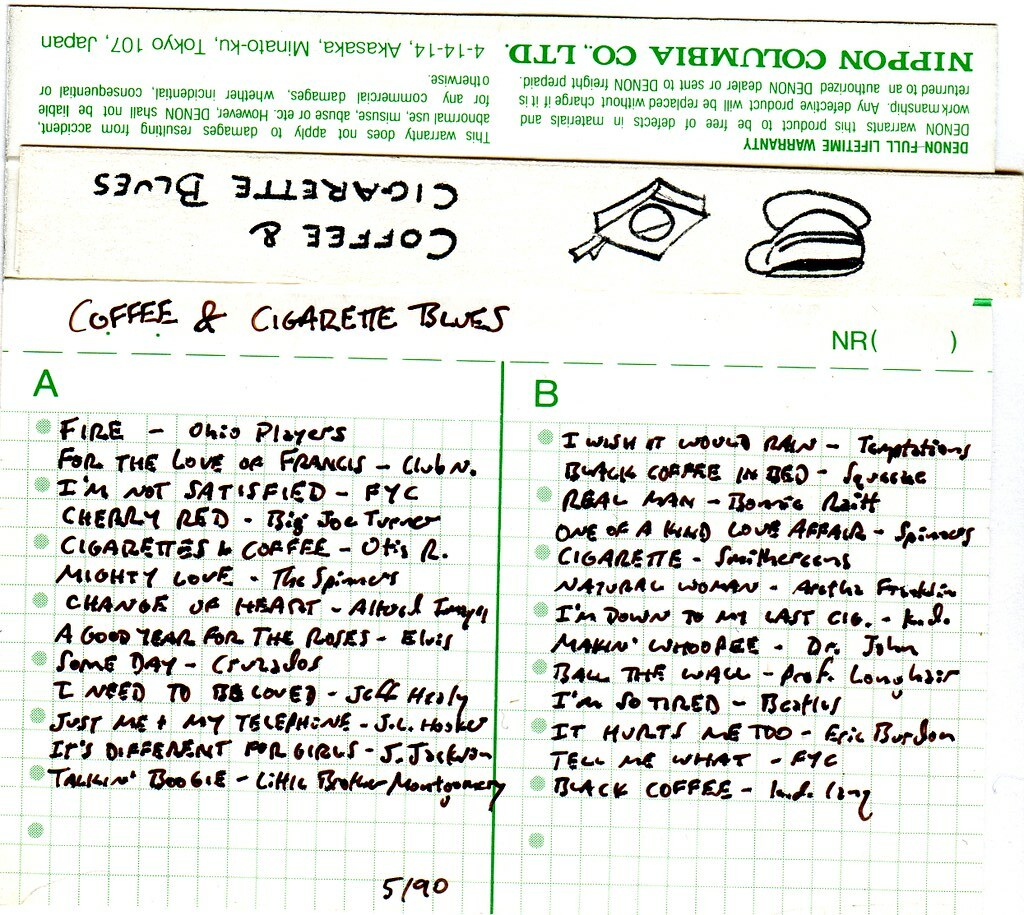


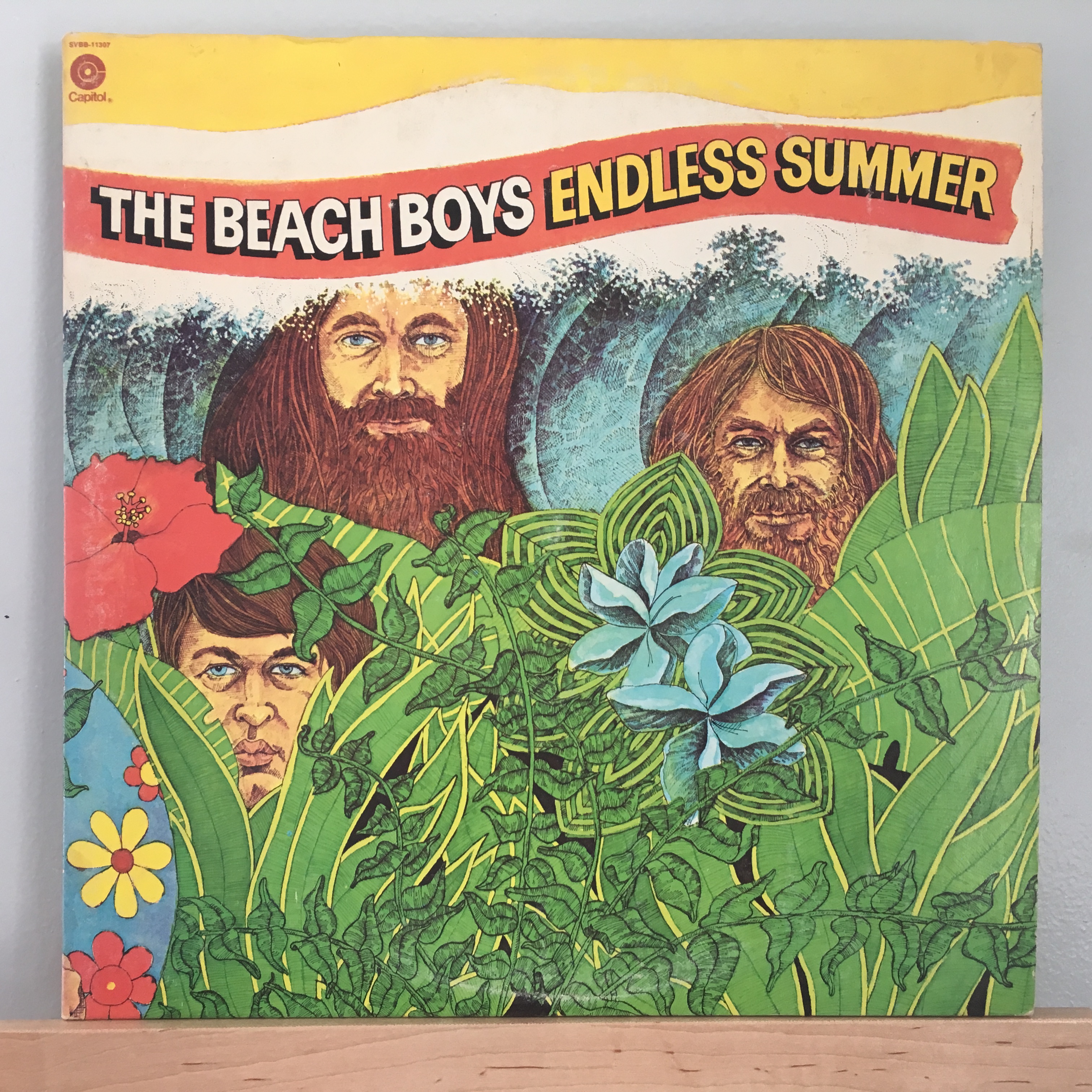
This was perfection- from the first french press to the mix cassette label. Carl- thank you for taking us all out for coffee. This Kd lp is magical and I am pulling it out for a much needed re- spin.
Thank you, Laura! I’m always a little disappointed when a record doesn’t dredge up this much memory.